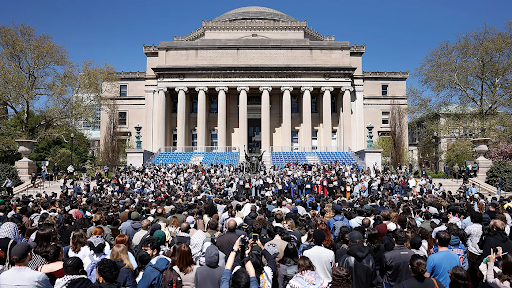As the old saying goes: “The Devil is dead…or at least, he has fled to Russia.” Bashir al Assad, former dictator of Syria, sought asylum in Russia in the aftermath of Damascus’ fall on December 8. Damascus’ fall at the hands of the rebels is only the latest stage of the ongoing Syrian Civil War, a conflict that has killed and displaced millions since 2011. Although Bashir al Assad himself is no longer in Syria, his legacy remains an undeniably negative stain on the Syrian people.
Bashir al Assad gained the Presidency in 2000, and initially subscribed to Ba’athism, a pan-Arab nationalist ideology that reproached Western influence. Though Assad initially made reforms to liberalize Syria, freeing critics of the government from prison, he later rescinded them. When two teenagers expressed dissatisfaction with Assad’s government in the midst of the Arab Spring, the regime’s imprisonment of them resulted in protests. These protests, harshly crushed, became the start of the Syrian Civil War, a fight that first sought to remove Assad from power, and eventually became a long-running conflict involving multiple inter-Syrian groups as well as outside governments and ISIS.
Over 7 million refugees fled from Syria over the war’s duration, with millions more displaced and unable to leave the country, having lost their homes and families. According to the New York Times, 600,000 people have been killed, half of them civilians. Though rebels and foreign forces are not clean of the death toll, Assad’s actions in the war were catastrophic. In the over-a-decade long struggle, Assad’s regime’s actions demonstrated a vast disregard for human life.
Assad’s usage of barrel bombs and chemical attacks, such as during the bombing of Aleppo, targeted civilian populations and resulted in thousands of casualties and destroyed infrastructure. His crimes against civilians included suppressing dissent, persecuting Kurds and Sunnis, ethnic cleansing, and the usage of barbaric detention centers.
In the detention centers, Syrians were tortured with electrocution, beating, and more. With the rebels seizing Damascus, people within the prisons have been freed, and while there have been happy reunions, many former prisoners are unaccounted for. According to the New York Times, of the 150,000 individuals taken into these prisons, it is estimated that 85,000 died there, with survivors struggling with mental and physical trauma in the aftermath.
Assad’s actions have had destructive impacts, not just in Syria, but beyond. Due to the casualties imposed on the population by Assad, ISIS, rebels, and other groups, millions of refugees have sought sanctuary in other countries. According to The Kurdish Project, Iraq alone has taken in ~4 million since the start of the war, half of whom reside in the Kurdistan Autonomous Region.
Admittedly, the fault is not all on Assad. ISIS and rebel groups both played a key role in perpetuating the violence. The US, Russia, and neighboring countries (Iran, Turkey) have all interfered to choose sides, sides that have all committed some form of human atrocity or another. Yet Assad played a crucial role; without his oppressive regime, artillery and chemical attacks, and inhumane treatment of civilians, the impact of the war would be less severe.
Though Damascus fell on December 7, war in Syria has not ended. There is still fighting between various forces, continuing even as Assad’s support continues to wane. Syria’s new de facto government must supply intense effort to stabilize the country, reconstructing it from over a decade of warfare. Although a hefty amount of criticism can still be thrown at the HTS, Syria’s new transitional government, Syria now is better than under Assad’s control.












